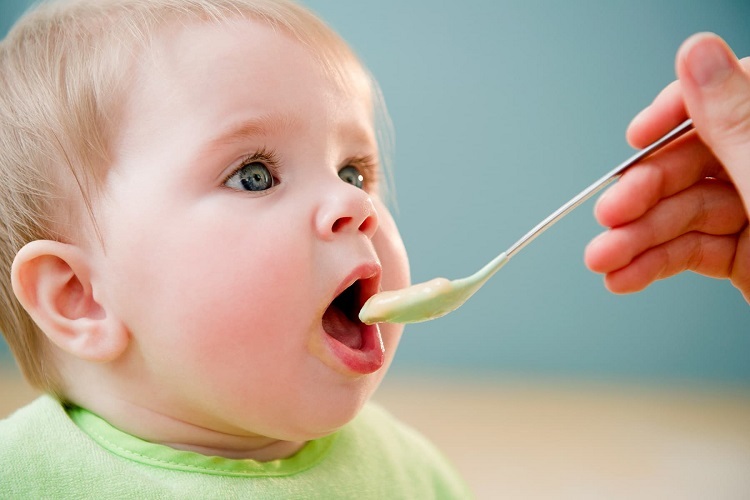Table of Contents
Is your baby ready to eat solids?
When to go for solids to feed your baby? The question has been bugging me ever since my baby showed up. Now she’s a bit older and now has eased her way into the chewing world. But I remember the mental trauma that I had to go through whilst deciding when I should really open her up to the munching side of life.
Whilst I researched day and night, I was bummed out by the controversial statements that I would often end up with relating to the right age to begin the nibbling process. Because you have to be on your toes to see for any developmental symptoms of readiness yourself, things were becoming trickier for me every day. But then I carefully crawled through the symptoms and settled for it one day when the line seemed clear, and things became smoother from that day.
This leaflet is intended to share my experience with you, and squeeze in a piece of useful advice so that you don’t rush into it or, au contraire, take the decision too late.
Giving an ear to the health experts
It is always a great idea to listen to what the bosses have to say. People who have years of experience in the field naturally carry a knack for making the right decision related to it. If you wish to know what the health experts have to say about it, read on:
WHO (World Health Organization), American Academy of Pediatrics and other health organizations believe it is best to wait around 6 months before letting your baby in for solid food. Top pediatricians vouch in attesting to the fact that a minimum of six months should be only reserved for breastfeeding. During that period, it is advisable you don’t even go for other liquid variants like soup, juice or cereal fluids.
Symptoms that say your baby is solid ready
Watch out for these symptoms in your baby to establish whether your child is in a developmental ready state to intake solid food:
- Your baby should be able to sit up without any support. The head should master the upright steady position.
- Your baby should have gone past the tongue thrust or the extrusion reflex, wherein he or she should no longer thrust back the solid food as a reflex.
- The birth weight should have doubled.
- Baby should seem ready and not reluctant to chew.
- Your baby should be going for the pincer grasp position wherein he/she should pick up the food between the forefinger and thumb
- The baby should seem interested in what you are having and might try to take some from your plate
- Your baby should be able to hold food in his/her mouth without ending up dribbling it.
- Your baby should be drooling less. This happens owing to the fact that your child is learning how to swallow and so everything goes down his/her throat. So, if there is little or no drool it means your baby has aced the process of pushing the food towards the back of the mouth and then swallowing it.
- When your baby keeps asking for breast milk even though there have been 8 to 10 feedings already. It means the baby appetite has grown.
If your baby is showing the aforementioned symptoms quite profusely it is almost time you start pacifying the boiling appetite of your little one, and acquaint the poor creature with some actual food.
When should the introduction to solid food happen?
Baby’s digestive tract has to be well prepped before it starts to take in solids. That doesn’t generally happen till your baby reaches the 6 months mark. It has been observed in some babies that the age of 4 to 6 months is the ideal age for taking in solids. It was further perceived and established that the time span was also the ideal time during which the digestion would begin to happen properly. However, the fact that you cannot make out the exact developmental readiness through a calendar makes things tricky. You have to actually watch out for the right signs in your baby to ensure the fact that the baby is solid ready. Just going by the months could create problems for your baby and fling you in the pits of wrongful judgment. To eschew that you need to be wary enough and look out for the right symptoms.
Types of food to be introduced
Since you don’t want to rush and surprise them little baby intestines, it is a great idea to begin slowly with some pureed food. Make your solids in a paste like form and introduce them gradually. You could go for the pureed versions of squash, bananas, peaches, pears, applesauce and sweet potatoes. Don’t even worry about the nutrition quotients because you already know how healthy, nutritious and bountiful they are.
Trying other variants of solid food, you can go with something as simple and healthy single-grain stuff like oatmeal. It is quite easy to digest and might help your baby to garner the crucial essentials like iron content. Alternatively iron fortified rice cereal is also a great option to feed your baby when he/she is solid ready. Make sure you mix it up with some breast milk so that the baby enjoys the meal and doesn’t face any problems with the transition.
If you wish to bring in some change in the diet plan, solids like carrots and avocados could be pureed and fed too. They are rich in essential Vitamins and minerals that are useful in the overall development of the baby.
Make sure you are not overwhelming the baby with all the food though. Remember to use a spoon to feed the child by placing the food only at its tip.



